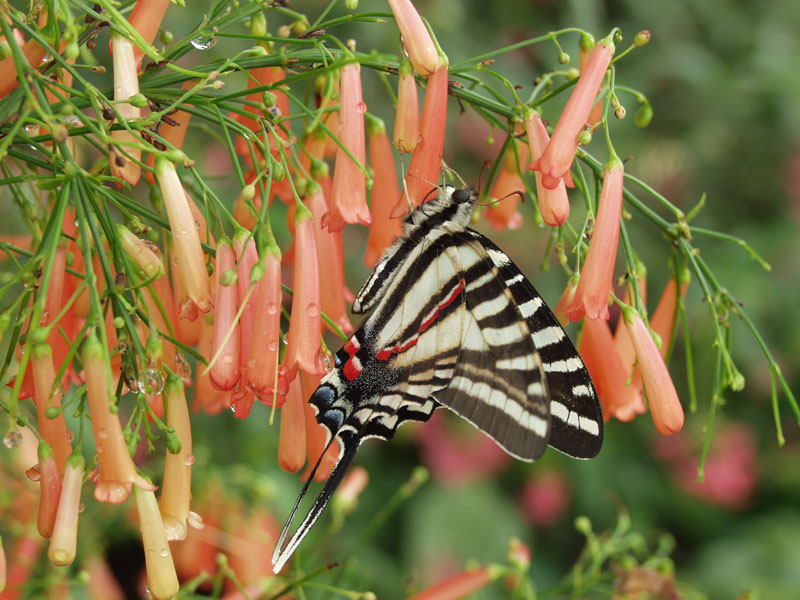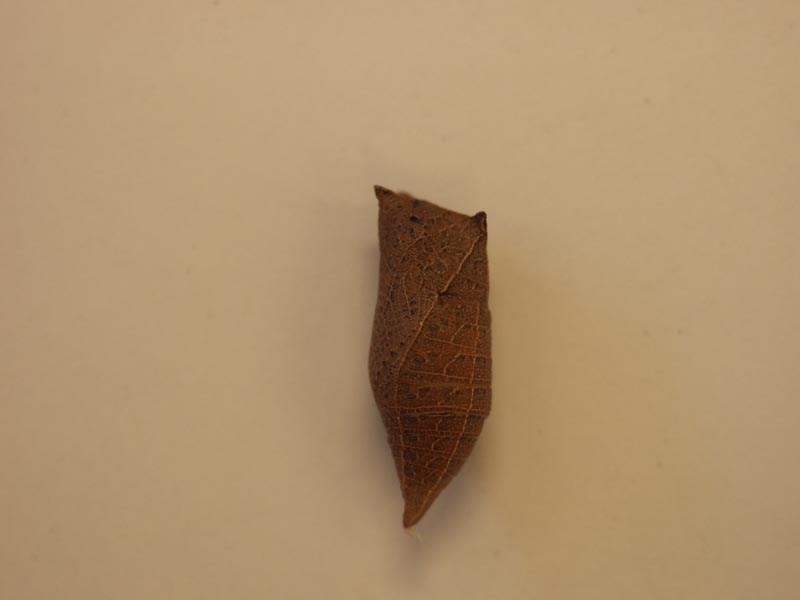


Having a shorter proboscis than other swallowtails, this butterfly uses the flowers of blueberry, redbud, lilac, verbena and common milkweed as their nectar source.
The genus is named after Eurytus, king of Oechalia. Marcellus is a Roman surname.
In broadleaf woodlands, along rivers, and in swamps where the host plant grows is where this butterfly can usually be found. Sometimes they stray into open fields in search of nectar plants.
To find a mate, the males patrol areas where the host plant is present. After mating, the female lays her eggs one at a time on the underside of the host plant leaves. Caterpillars then eat the leaves until they form their chrysalis. The butterfly overwinters as a chrysalis.
In the north, there are 2 broods between April and August. In the south there can be up to 4 broods between March and December.
When threatened, the caterpillar pops out an orange gland, called an osmeterium, which releases a strong odor to repel small predators. In 1995, the Zebra Swallowtail was named the state butterfly of Tennessee.